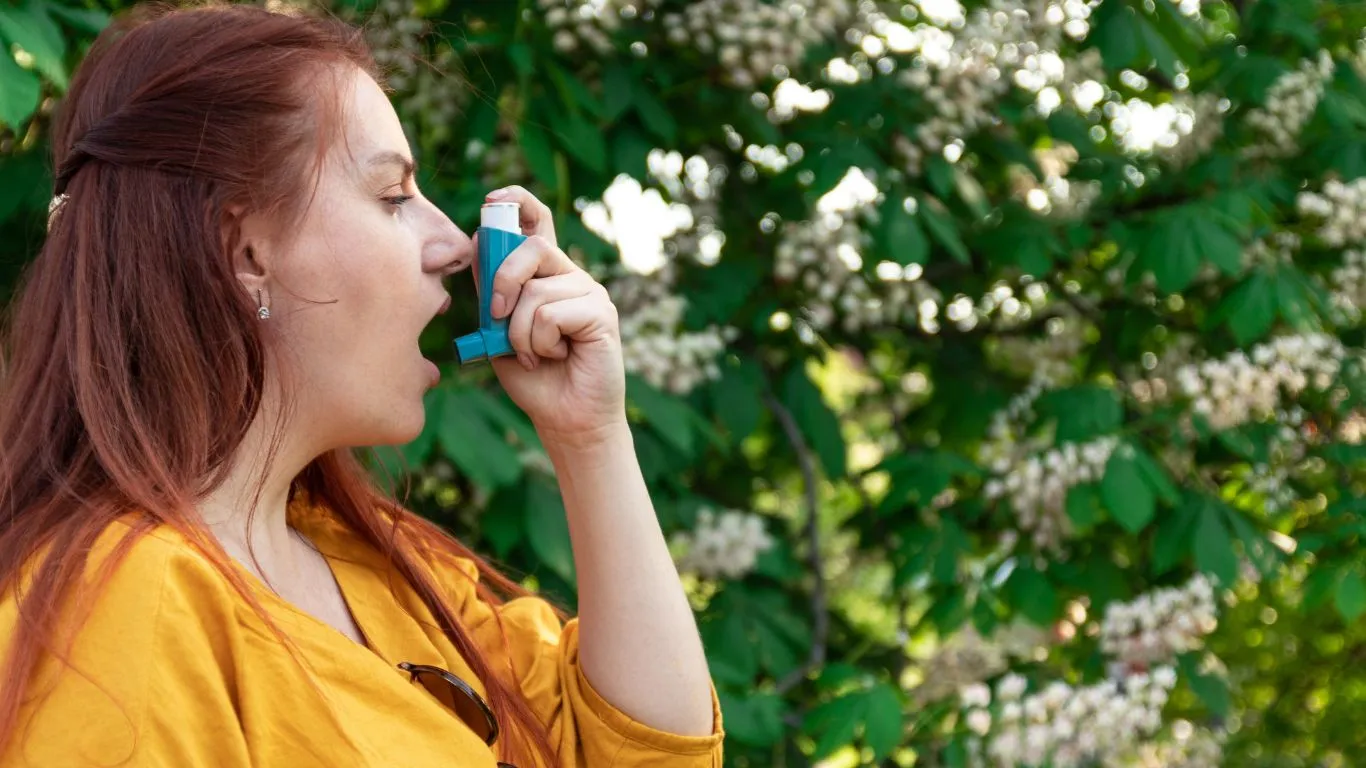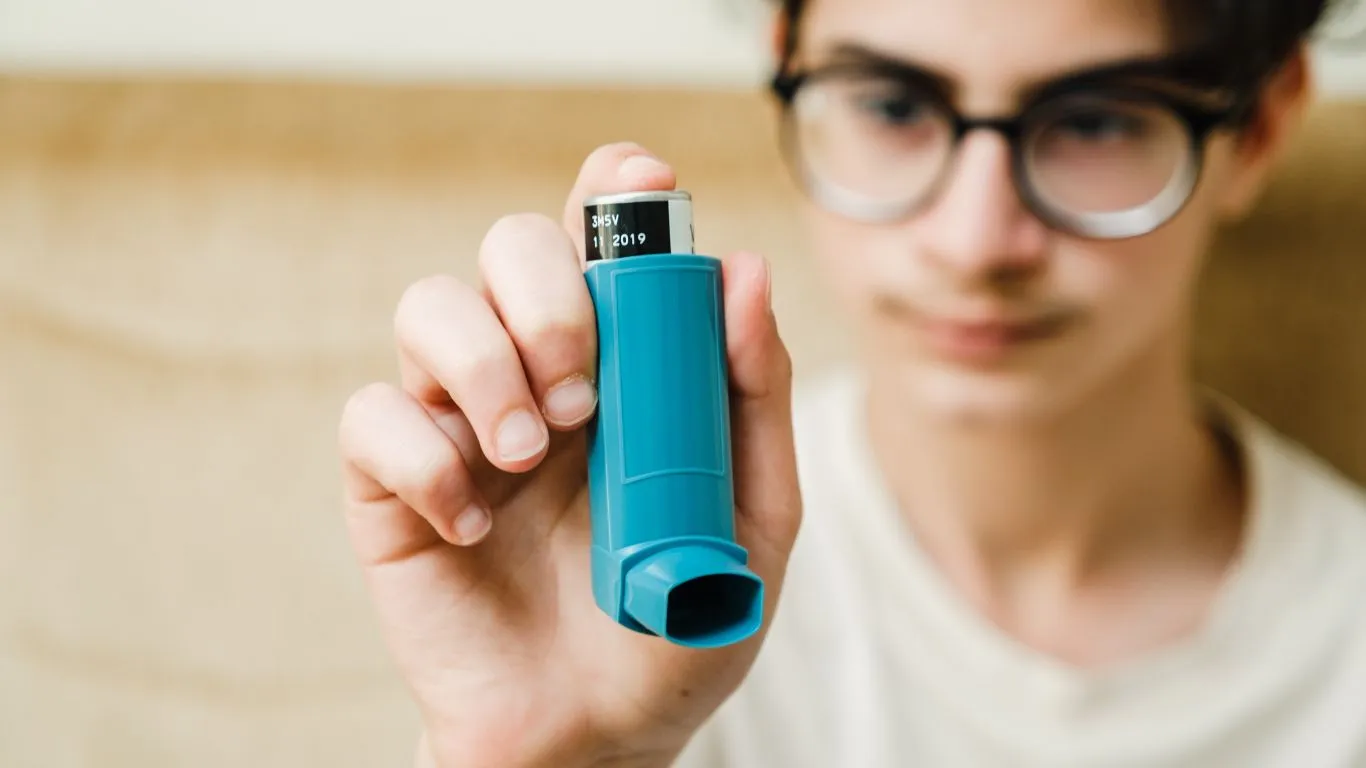Can asthma be triggered by cleaning products? What you need to know
Let’s talk about something you probably haven’t thought much about—your cleaning products. Yep, those bottles under your sink might be doing more than just disinfecting your countertops. If you’ve ever asked yourself, can asthma be triggered by cleaning products, you’re not alone. As a pulmonary nurse practitioner who’s seen this time and time again in clinic, I can tell you, the connection is real. I’ve had patients come in wheezing and short of breath, only to trace their flare-ups back to “spring cleaning day.” It’s one of those sneaky culprits that flies under the radar.
How Cleaning Products Can Affect Your Lungs

Most people don’t associate their glass cleaner or bleach wipes with breathing issues. But trust me, many of these products release volatile organic compounds (VOCs) and strong fragrances that irritate the airways—especially if you already have asthma or other respiratory sensitivities. I’ve had patients tell me they felt like they were developing asthma out of nowhere, and it turned out they’d recently changed to a more “powerful” cleaner at home.
Common Offenders in Household Cleaners
Here are a few ingredients and types of products I always tell my patients to be cautious with:
- Bleach: Highly irritating to the lungs, even in small amounts
- Ammonia: A harsh chemical that creates strong fumes
- Quaternary ammonium compounds: Often found in disinfectant wipes and sprays
- Aerosol sprays: Air fresheners, furniture polish, even some bathroom cleaners
- Fragrances: That “lemony fresh” scent can be loaded with synthetic irritants
Pro tip from the clinic: Patients often assume “natural” or “green” cleaning products are safe. Not always the case! If it has a scent or spray, it can still trigger asthma symptoms. Always check the label—and better yet, go unscented whenever possible.
What Happens in the Lungs When You’re Exposed

So, what exactly happens in the lungs when you breathe in these irritants? If you have asthma—or even a tendency toward respiratory sensitivity—your airways are already inflamed and hyperreactive. When exposed to chemical fumes, your lungs react defensively. That means:
- Bronchial muscles tighten (bronchoconstriction)
- The lining of the airways swells up
- Extra mucus production clogs things up further
This combo makes it harder to breathe, causing wheezing, coughing, chest tightness, or even a full-blown asthma attack. I’ve seen patients land in the ER because they decided to deep clean their bathroom without enough ventilation. It’s a real risk, not just an inconvenience.
Who’s Most at Risk?
While anyone can react to strong fumes, these folks are especially vulnerable:
- People with pre-existing asthma or chronic bronchitis
- Children—tiny lungs, bigger impact
- Older adults, especially with compromised lung function
- Cleaning staff and janitors exposed daily
- People with a family history of allergies or asthma
As someone who’s worked closely with both asthma patients and pulmonologists, I’ve learned that we underestimate the role our environment plays in our lung health. It’s not just about pollen or cold weather—it’s about what you inhale every day inside your own home.
Recognizing the Signs: When Cleaning Might Be a Trigger

If you ever notice symptoms flaring up right after you clean—or even while you’re in the middle of wiping things down—pay attention. This might include:
- Coughing fits that come out of nowhere
- Feeling tightness in your chest or shortness of breath
- Wheezing—especially if it’s high-pitched and you haven’t exercised
- Watery eyes, nasal congestion, or sneezing during/after cleaning
One of my patients actually brought in a video of her cleaning routine, and we spotted the trigger instantly: she was using a heavy-duty bathroom foam cleaner in a windowless room. No airflow, no mask—just a chemical cloud. No wonder her symptoms were flaring up.
Practical Tips to Reduce Asthma Triggers from Cleaning Products

After seeing so many patients struggle with asthma flare-ups linked to cleaning products, I always stress prevention. It’s not about quitting cleaning altogether—let’s be real, that’s not an option for most of us—but about being smarter and safer when you do. Here are some simple, practical steps I recommend based on my experience in pulmonary care:
1. Choose Your Products Wisely
Not all cleaning products are created equal. Look for those labeled unscented, fragrance-free, and non-toxic. Avoid bleach, ammonia, and sprays with heavy chemicals if possible. I’ve noticed patients feel a big difference when switching to milder products or those based on natural ingredients like vinegar or baking soda.
2. Ventilation is Your Best Friend
Always open windows and doors when cleaning, especially when using products with strong fumes. If you have an exhaust fan, turn it on. I’ve walked into homes where people were deep cleaning in a closed bathroom or kitchen and then wondered why their asthma was acting up. Fresh air really helps reduce irritants in the air.
3. Wear Protection
If you have asthma or sensitive lungs, wearing a mask while cleaning can make a huge difference. I know it feels a little extra, but a simple surgical mask or even a cloth face covering blocks some of those irritating fumes from reaching your airways directly. Gloves can also prevent skin irritation and reduce the risk of transferring chemicals to your face.
4. Timing Matters
Try to clean when you’re feeling your best and can afford to step outside for some fresh air afterward. Avoid cleaning during an asthma flare or if you’ve recently been exposed to other triggers like cold air or allergens.
5. Rethink Aerosols and Sprays
Sprays are notorious for kicking up chemicals into the air. Instead, use a damp cloth or sponge to apply cleaning solutions. This reduces airborne particles and lowers the risk of inhaling irritants. Trust me, your lungs will thank you.
How I Help Patients Identify Cleaning-Related Asthma Triggers

In my practice, the journey often starts with a detailed conversation about home and work environments. Asking questions like:
- What cleaning products do you use regularly?
- Do your symptoms worsen after cleaning or being in a freshly cleaned space?
- Do you notice symptoms in certain rooms more than others?
- Have you recently switched cleaning products or brands?
These questions help paint a clearer picture of whether cleaning products are likely culprits. I also guide patients to keep a symptom diary that tracks their breathing, activities, and exposures over days or weeks. Sometimes it’s not obvious, but patterns emerge—like symptoms worsening after using a particular spray or cleaner.
Another useful approach is a trial period where patients switch to hypoallergenic, fragrance-free products or avoid cleaning themselves for a few days (if possible). The difference in symptoms can be quite revealing. I’ve had patients surprised to realize a “new and improved” bathroom cleaner was actually making their asthma worse.
Medical Insights: Why This Matters

From a medical standpoint, understanding that cleaning products can trigger asthma is crucial. Persistent exposure to irritants can worsen inflammation and even lead to long-term lung damage if left unmanaged. This isn’t just about immediate coughing fits; it’s about protecting lung health over the years.
Recent studies back up what I see daily: occupational asthma is common among cleaning staff due to constant exposure to chemicals. But even home use matters. The lungs don’t have the same capacity to filter out chemical irritants as the skin or stomach, so inhaling these toxins directly impacts respiratory health.
That’s why doctors and respiratory therapists encourage patients to incorporate trigger avoidance as a core part of asthma management, alongside medications like inhalers and steroids. Addressing environmental factors often leads to better symptom control and fewer emergency visits.
Personal Story: A Patient’s Turning Point
I recall a patient in her 40s who struggled with unexplained asthma attacks for years. After switching jobs and moving into a new apartment, her symptoms worsened significantly. When we dug deeper, it turned out she had started using industrial-strength cleaning wipes daily, believing they were “better” at keeping things germ-free. After she switched to fragrance-free, gentler products and improved ventilation at home, her asthma attacks reduced dramatically. It was a simple change, but it made a world of difference.
That’s the power of understanding the link between cleaning products and asthma—it can transform how you manage your health every day.
Long-Term Strategies to Manage Asthma Triggered by Cleaning Products

By now, you’ve probably realized just how much cleaning products can impact asthma symptoms. But what about the long haul? From my years working with patients, I know that managing asthma isn’t just about handling flare-ups when they happen—it’s about building a lifestyle that keeps your lungs as healthy and calm as possible every single day.
Developing a Cleaning Routine That Works for You
The first step is creating a cleaning routine that minimizes your exposure to irritants without sacrificing a clean and safe home. Here’s how I suggest approaching it:
- Break cleaning into smaller tasks: Instead of doing everything in one go, spread it out over several days. This reduces your exposure time and gives your lungs a break.
- Prioritize essential cleaning: Focus on areas that need regular attention like kitchens and bathrooms. Skip unnecessary deep cleans if they provoke symptoms.
- Use alternatives when possible: Natural ingredients like vinegar, baking soda, and lemon juice can be surprisingly effective without the harsh chemicals.
- Stay consistent with ventilation: Always ensure fresh air is circulating during and after cleaning to clear out any lingering fumes.
One thing I often tell patients: don’t be afraid to ask for help. If you can, delegate or hire cleaning help, especially during flare-ups or if your asthma is difficult to control. Your lungs deserve that kind of care.
Medication and Monitoring
Of course, environmental control is only part of the story. Proper medication use is crucial to keeping asthma symptoms in check. I work closely with patients to ensure they understand their inhalers, steroids, and other prescribed treatments.
Monitoring symptoms regularly and having a clear asthma action plan tailored to your triggers—including those sneaky cleaning products—can prevent minor irritation from escalating. Remember, never hesitate to reach out to your healthcare provider if you notice new or worsening symptoms.
Creating a Safer Home Environment Beyond Cleaning Products

Cleaning products aren’t the only environmental factors that can worsen asthma. Here are additional steps I recommend for making your home as asthma-friendly as possible:
Reduce Dust and Allergens
- Use hypoallergenic bedding and wash it weekly in hot water
- Keep pets out of bedrooms and off furniture if you’re allergic
- Vacuum regularly with a HEPA filter vacuum cleaner
- Control humidity to prevent mold growth, ideally between 30-50%
Air Quality Matters
Indoor air pollution can be a hidden trigger. Consider using air purifiers equipped with HEPA filters and avoid smoking inside. Even scented candles and incense can aggravate sensitive lungs.
Be Mindful of Other Household Products
Besides cleaners, products like paints, glues, and even some personal care items can trigger asthma. Read labels carefully and opt for low-VOC or natural options whenever you can.
Wrapping Up With Real-Life Wisdom
From my personal experience and clinical practice, understanding the connection between cleaning products and asthma isn’t just about knowledge—it’s about empowering you to take control of your health. These little changes in your routine and environment can lead to big improvements in your quality of life.
Asthma can feel overwhelming at times, but with the right strategies, it doesn’t have to control your life. Take it step by step, listen to your body, and don’t hesitate to reach out to professionals who can guide you along the way.
References
Disclaimer
This article is intended for informational purposes only and does not replace professional medical advice, diagnosis, or treatment. Always consult your healthcare provider regarding any questions you may have about your asthma or health condition. Individual experiences with asthma triggers may vary, and personalized care is essential.

Bianca Nala is a compassionate Nurse Practitioner with a strong background in primary and respiratory care. As a health writer for Healthusias.com, she combines her clinical expertise with a talent for clear, relatable storytelling to help readers better understand their health. Bianca focuses on topics like asthma, COPD, chronic cough, and overall lung health, aiming to simplify complex medical topics without losing accuracy. Whether she’s treating patients or writing articles, Bianca is driven by a single goal: making quality healthcare knowledge accessible to everyone.






